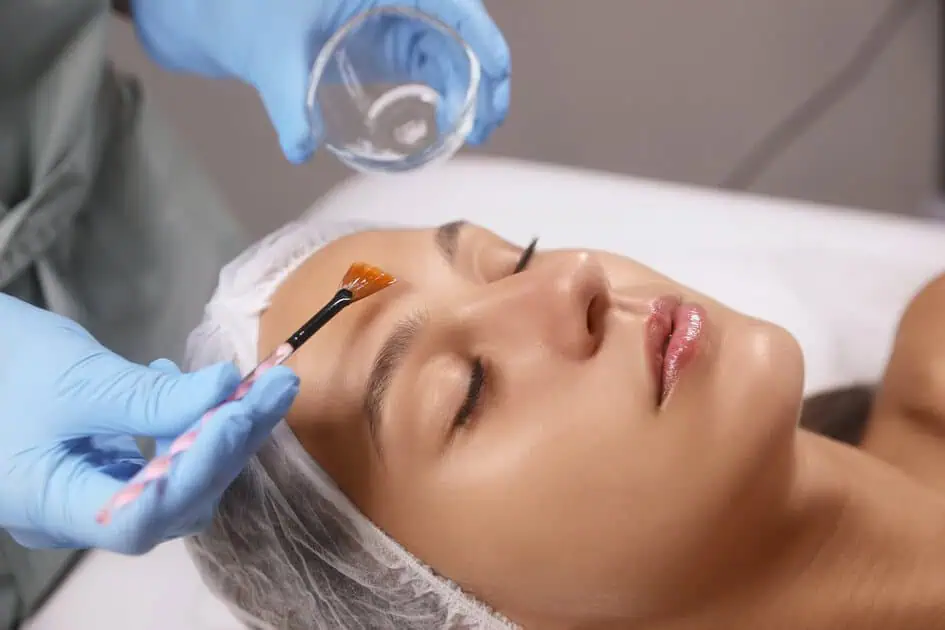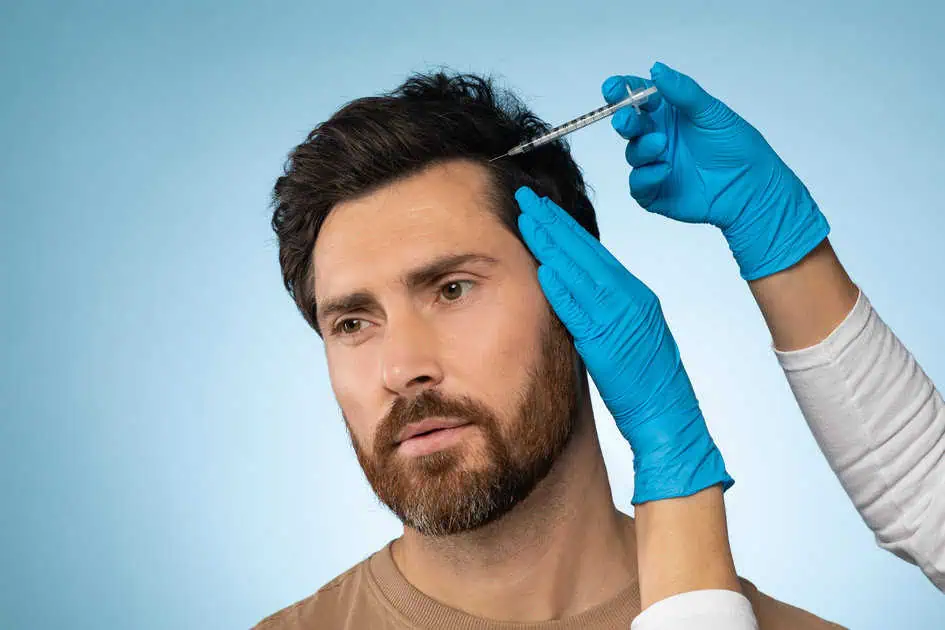

Are you noticing the effects of sun damage or signs of aging in your skin? Perhaps you’ve developed fine lines, uneven texture, or dark spots, and you’re searching for an effective solution. If you’re considering a chemical peel, you’re in the right place.
This blog delves into how chemical peels can rejuvenate your skin. The safe aesthetic procedure is known for its powerful treatment for reversing sun damage and restoring youthful radiance.
From understanding how the treatment works to exploring its transformative benefits, we cover everything you need to know about chemical peels. Keep reading to discover why this procedure could be your key to achieving healthier, more vibrant skin.
Chemical peel treatments are cosmetic procedures that involve applying a chemical solution to the skin. The chemical is safe and effective in addressing several skin issues.
The mentioned chemical solution exfoliates the skin’s outer layers. It then reveals fresh, healthy skin beneath. Depending on the depth of the peel—superficial, medium, or deep—chemical peel treatments can address a variety of skin concerns. These are commonly sun damage treatment, fine lines, and discoloration.
Chemical Peel treatments work by stimulating the skin’s natural regeneration process. Here’s how this effect helps with sun damage and aging:
Chemical peel benefits include removing the outer layer of dead skin cells. Eventually, it promotes a brighter, smoother complexion. This process reveals fresher, healthier skin underneath, giving the face a renewed appearance.
Regular exfoliation also helps to unclog pores. Such an effect effectively diminishes the likelihood of acne and other blemishes.
By triggering the skin’s healing response, peels encourage the production of collagen and elastin. This natural process reduces the appearance of fine lines and wrinkles.
Collagen is essential for maintaining skin firmness, and increased production helps restore youthful plumpness. Over time, this leads to more resilient skin that resists signs of aging.
Peels target dark spots and discoloration caused by sun damage treatment. They can even out your skin tone. By breaking down melanin clusters in the skin, chemical peel procedures effectively fade sunspots and age spots.
The stated effect also helps to prevent further pigmentation issues by promoting an even skin regeneration cycle.
By resurfacing the skin, chemical peel benefits include reducing roughness and improving overall skin texture. This results in smoother, softer skin that feels rejuvenated. Consistent treatments can also address acne scars and other textural irregularities for a more even complexion.
After a peel, the skin is more receptive to skincare products. Thus, the treatment allows active ingredients to penetrate deeper and work more effectively.
This also means that your moisturizers, serums, and other treatments will deliver enhanced benefits, maximizing your skincare routine. Over time, this improved absorption can significantly improve skin health and appearance.
Sun Damage: Ultraviolet (UV) radiation from the sun penetrates the skin and causes damage at the cellular level. This can result in the following:
Signs of sun damage treatment often include sunspots, rough texture, and dullness.
Aging: Natural aging leads to a decline in collagen and elastin production. These proteins are essential for maintaining the skin’s elasticity and firmness. As we age, the skin also becomes thinner, making it more prone to wrinkles and fine lines.
As we age, dynamic facial movements create lines that deepen over time. Chemical peels work to soften these lines, especially in high-movement areas like the forehead and around the mouth. This effect is particularly beneficial for areas prone to expression lines, such as around the eyes and mouth.
Persistent sun exposure often leaves behind dark spots that are resistant to standard skincare. Chemical peels offer a targeted approach to lightening these spots and preventing their recurrence. Peels lighten areas of hyperpigmentation and prevent further discoloration.
Enlarged pores can trap dirt and oils, leading to breakouts and dullness. Chemical peels shrink pores over time, creating a more polished and refined appearance. Smaller pores contribute to a smoother texture and reduce the chances of breakouts.
Dullness caused by dead skin cells and environmental damage can be reversed with a chemical peel. The treatment restores vibrancy and leaves the skin glowing. The exfoliation process enhances radiance, making the skin appear healthier and more vibrant.
During the treatment, the chemical solution is applied to the skin and left on for a specific amount of time, depending on the type and depth of the peel. You may feel a tingling or warm sensation as the peel works on your skin.
After the procedure, the skin may peel or flake over the next few days. Recovery times vary, with superficial peels requiring minimal downtime and deep peels needing several weeks of healing. Following your provider’s post-treatment instructions, including using sunscreen and avoiding sun exposure, is essential to protect your results.
At Timeless Skin and Wellness and Weight Loss, we specialize in chemical peel treatments designed to address your specific skin concerns. Whether you’re dealing with sun damage treatment or looking for effective anti-aging skin care, we are experienced in customizing each treatment according to your needs.
Our chemical peel treatments in South Ogden use advanced techniques and high-quality products to deliver noticeable results. From superficial peels to deeper treatments, we’ll help you achieve youthful skin restoration and a radiant glow.
Get That Youthful Glow – Schedule a Chemical Peel with Us Today!
Yes, chemical peels can be an effective treatment for acne scars. This is especially true with superficial and medium-depth scars. Peels help to reduce the appearance of scars by resurfacing the skin and promoting collagen production. The outcome? A smoother skin texture.
The frequency of chemical peels depends on the type of peel and your skin’s needs. Superficial peels can often be done every 3-4 weeks. On the other hand, medium and deep peels may require several months of recovery time between treatments. Consult your provider for a personalized schedule.
Chemical peels are specifically designed to benefit most skin types. However, patients with certain conditions, such as active skin infections or very sensitive skin, may need to avoid them. A professional consultation can determine if a peel is right for you.
It’s generally recommended to avoid makeup for at least 24-48 hours after a peel to allow the skin to heal properly. Your provider will give you specific instructions based on the depth of your peel.






Ready to schedule your beauty treatment?
We offer free consultations.